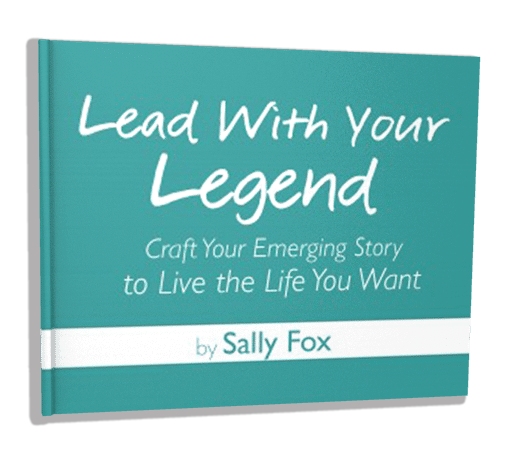
I learned the joy in blankness as I played with my new favorite toy—a “Buddha Board.” The device lets you channel your inner Chinese brush artist as you dip a thick brush into water and paint over the board. Then, as you watch, the water evaporates and the marks fade away. The surface returns to blank.
Within a few minutes of playing with this purchase from my local thrift store, I was entranced. I practiced making cool marks (harder than it seems) and let them disappear.
That was when came to me, I need a Buddha Board for my brain—a way to let my brain go fallow and the daily surfeit of thoughts disappear.

Too much info
When I was a child in school, I thought my job was to acquire information. Now, I have to fight it off.
Too many items to think about, and I overload.
Every day I receive a glut of information demanding that I think, worry, or do something. Facts, concerns, world issues, solicitations, news, and social media regularly vie for my attention—until I have none left.
This week my brain felt like it contained a pen of wild mustangs charging about, running in circles—raging to go somewhere else—and blocking any chance of clear, focused thinking.

The Zen parable
You probably know the story of the Zen master, devotee, and teacup, but just in case:
One day an important man came to visit the Zen master. “Teach me about Zen,” he said. “I want to know the road to enlightenment.”
(The man was used to getting his way.)
The Zen master invited him to sit down and offered him a cup of tea. But as he poured his visitor a cup, he let the tea fill the cup and pour over the rim.
This agitated his visitor who knew better than to do such a thing.
Finally, the Zen master explained. “Your mind is like this tea cup, so full that nothing more can be added. I can teach you nothing until you return with an empty mind.”
Beautiful blank spaces

Blank is spacious.
Blank is a reprieve.
Blank is a break.
![]()

But how to get there? Meditation can help clear the mind —although, frankly, when my mental mustangs are pawing and snorting, they aren’t likely to politely settle when I try to tell them, “Come on guys, it’s quiet time.”
When trying to be still feels futile, it helps me to do something that shifts my attention, doesn’t require any mental processing, or at least uses a different part of my brain than that the one contemplating “When will I do taxes?” or “How can I promote world peace?”
Drawing has recently been my go-to for brain relief.
For a blessed half hour or more, all I need to think about is line, shape, light and shadow—and allow my mind to be diverted into observation rather than processing.

Painting intuitively can help, as can walking slowly in the woods or weeding the 5,042 new entrants to the garden last night.
Doing such activities allows me to turn off my thinking and bask in some blessed blankness.
The hidden threat
My “brain too full” woes can sound petty; in a sense, they are. But let’s put this in context.
One of the brain-clogging pieces of data from last week was the news that the next generation of uber-powerful AI tools was arriving. Their capabilities sound straight out of sci-fi.
Caution humans: your contribution may soon be surplused.

AI can:
Process information and solve certain kinds of problems at higher speeds than you ever can;
Be programmed to show empathy. Right now, machines are being taught to replicate human-sounding feelings (very scary);
Create almost-original ideas. AI builds on what has already been done, but that may be good enough to produce a medium-quality advertisement, blog post, art, or who knows what.
(AI wouldn’t require the six years it has taken me to write a book.)
Provide customer service. While bots may not be doing that great today, within a few years, service-centered humans may be a thing of the past.
What AI can’t do
While it might sound like we, as sentient beings, are becoming expendable, there’s one question that AI can’t answer (in more than a functional way),
ˆWhat makes us human?”
AI can bring us information and solve problems, but it doesn’t know what lives in the blank spaces, the silence between the notes, the pause between breaths, or the enigmatic spaces in a canvas that are not filled in.
Understanding the power, mystery, and magic of blankness is not what AI is trained to do.
Blank is where awe can be nourished. Blank is where the soul can relax and gain strength. Blank is where we prepare to see what lives in the unseen and hear what is in the unsaid.
A modest step

Today, I’m not shooting for enlightenment. I’m just going for more moments of “blank.” Perhaps, if I spend a few more minutes with my Buddha Board, the mustangs will calm down enough for me to safely open the gate and let them gallop away.
I’m sure they’d prefer more open space—and so would I.










3 Responses
Thanks Sally for this valuable post! Glad to hear you are drawing again! Blending tactile and visual awareness together helps us empty ourselves of labeling, naming, interpreting, judging – and helps us experience FEELING. AI cannot FEEL! Our heart and soul feels! Your book is going to be so helpful to so many people! Can’t wait for it to be published!!!
Thanks for all of your support!!!
Thanks again for your nourishing insights.